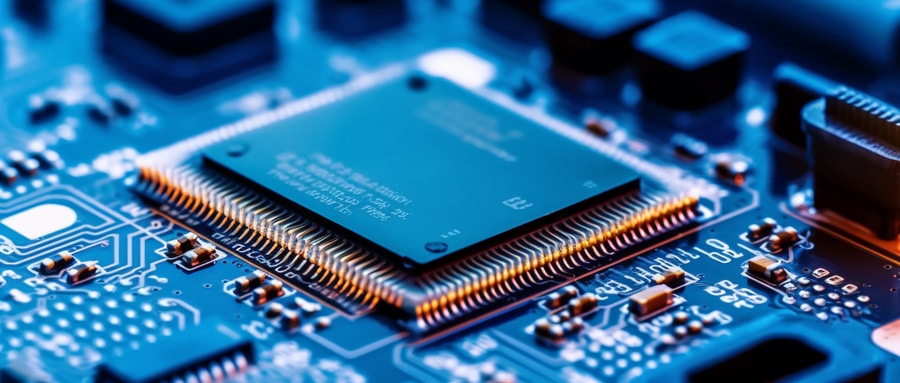The Ultimate Guide to PCB Design Book: Essential Books for Aspiring Designers
In the world of electronics, understanding the intricate art of designing Printed Circuit Boards (PCB) holds prime importance. If you’re an aspiring PCB designer or a seasoned practitioner looking to enhance your knowledge, this article presents a curated selection of books that can serve as authoritative guides on your PCB design journey.
Understanding PCB Design: A Primer
PCB design is the process of creating a physical layout of the electronic components and the copper tracks connecting them. As digital realities get more complex, this process requires finesse, expertise, and continuous learning.
The Art of Empowering Books
Books can be a priceless reservoir of knowledge when it comes down to mastering the in’s and out’s of PCB designing. They offer theory, practice, and insights into the industry, serving as an accessible toolkit for beginners and a deep knowledge resource for the experienced.
Curated For You: Top PCB Design Books
- “Printed Circuits Handbook” by Clyde F. Coombs
Regarded as the most comprehensive resource on printed circuits, it covers everything from design to manufacturing, testing, and even environmental issues. - “High-Speed Digital System Design: A Handbook of Interconnect Theory and Design Practices” by Stephen H. Hall and Garrett W. Hall
This book provides in-depth knowledge about designing high-speed digital systems and is a must for designers focusing on advanced applications. - “The Hitchhiker’s Guide to PCB design” by EMA Design Automation
A highly recommended read for beginners to the world of PCB design, this guides the reader through real-world design processes with unique insights and tips. - “RF Circuit Design” by Christopher Bowick
For those keen on exploring Radio Frequency (RF) circuit design, this book provides a fundamental understanding of the principles involving RF circuit design architectures.
How To Use These Books?
Start with the basics before diving into specialized areas. Aspects such as understanding the design process, component placement, signal paths, and anticipating manufacturing issues form the initial focus. Once comfortable, move on to more complex topics like RF design, high-speed digital systems, etc.
Concluding Thoughts: Empowering Through Reading
Having a strong foundation in PCB design can open uncharted avenues in electronics. The right books are empowering tools that can help novices and experienced professionals alike to navigate the intricate world of PCB design with confidence.

FAQ:
- What can I expect to find in a PCB design book?
In a PCB design book, you’ll typically find information on the essentials of PCB design, including topics such as basic electronics theory, how to draw circuit diagrams, layout design principles, proper use of components and connectors, and guidelines for the routing of traces. - Can you recommend any good PCB design books for beginners?
Yes, “Printed Circuit Board Design for Real-World EMI Control” by Bruce Archambeault and “Printed Circuits Handbook” by Clyde Coombs Jr. are both excellent books for beginners. They present complex topics in a clear and understandable manner. - How about advanced topics in PCB design?
For more advanced topics, “High-Speed Digital System Design: A Handbook of Interconnect Theory and Design Practices” by Stephen Hall and “EMC and the Printed Circuit Board: Design, Theory, and Layout Made Simple” by Mark Montrose are good reads. - Are there books that focus on specific PCB design software?
Yes, there are books that cater to specific PCB design software. For instance, “PCB Design in Eagle – A Practical Guide” by Mark Hughes and “Making Embedded Systems: Design Patterns for Great Software” by Elecia White, which includes information on designing with Eagle PCB software. - Are there PCB design books specifically for certain industries?
Yes, some books focus on the specific PCB design needs of industries like telecommunications, automotive, or aerospace. An example is “Design Techniques for EMC — Part 4 Shielded PCBs” by Keith Armstrong which focuses on standards and methods for the telecommunications industry. - How updated are these PCB design books?
The field of electronics keeps evolving. While some fundamentals remain constant, elements like new design strategies or updates on design software get added. It’s important to check the publication date to ensure the content of the book aligns with current standards. - Apart from pcb design books, where else can I learn about PCB design?
Apart from books, there are lots of resources like online tutorials, webinars, and courses, video lectures (like on YouTube), and forums where PCB design is discussed. - Can I get these PCB design books in digital format?
Most modern books are available in both print and digital format. Websites like Amazon, Barnes & Noble, and others offer e-book versions. Springer, IEEE Xplore and other professional publications often have digital versions as well. - How often should I refer to these books?
While these books are a good source of learning, PCB design is a practical field. So the theory should be regularly complemented with practical work. The more you practice designing and manufacturing PCBs, the more proficient you will become. - Are there PCB design books that also cover assembly and testing?
Yes, comprehensive books like “The Art of PCB Reverse Engineering” by Keng Tiong Ng cover topics of design, assembling, and testing. It offers an all-round understanding of the process.























